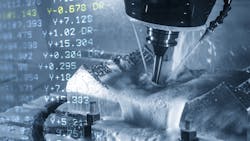How Data Logger Calibration Improves Predictive Maintenance for Better ROI
Predictive maintenance (PdM) is one of the most beneficial strategies for managing industrial equipment. However, its efficacy depends on the reliability of the sensors gathering maintenance data from the machine in question. Consequently, an effective PdM strategy must include data logger calibration steps.
As more businesses start to rely on predictive maintenance, ensuring it delivers solid returns becomes increasingly important. Maximizing these returns on investment means paying more attention to data loggers and their calibration needs.
The Importance of Predictive Maintenance
To fully grasp the importance of data logger calibration, one must first understand why predictive maintenance is so crucial. That begins with recognizing the direct and indirect costs of conventional repair strategies.
Manufacturers spend an estimated $220 billion annually on equipment maintenance. These high costs stem from two main causes—direct repair expenses and lost productivity. Repairing a broken machine is expensive—especially if it needs extensive work—but the lost revenue from shutting down after breakdowns or to allow maintenance can cost even more.
Improper maintenance also makes production defects and unnecessarily high energy expenditures more likely. As a result, run-to-failure approaches create higher ongoing expenses from rework, material loss and utility spending.
READ MORE: The Value of Predictive Maintenance
PdM addresses all of these cost categories. Since fixing issues when they first arrive prevents larger, costlier breakdowns, it minimizes direct repair costs. PdM also enables need-based repairs, minimizing maintenance-related downtime, and its timeliness prevents defects and energy waste. As a result, it can produce 15-98% reductions in maintenance costs and 35-45% reductions in downtime.
Why Data Logger Calibration is Crucial for PdM
These returns are impressive, but this can only be achieved if a PdM strategy works as intended. Here’s a closer look at why data logger calibration is essential to that goal.
Improved Sensor Reliability
PdM’s benefits stem from getting real-time updates about machine-specific maintenance needs from remote data loggers. You can save time and money because these sensors provide the most specific and up-to-date look at your equipment’s condition. However, that’s only possible if the sensors are accurate.
Predictive maintenance relies heavily on data quality. Consequently, if your data logger is even slightly off, it could lead to considerable mistakes. It may tell you something needs repair when it doesn’t or fail to alert you when a machine does require maintenance.
These issues may seem small, but they add up over time. Organizations lose $12.9 million a year on average from acting on poor-quality data. If you want to avoid similar expenses, you must ensure you properly calibrate your PdM data loggers.
Data Relevance and Accuracy
Similarly, proper data logger calibration assures you gather the right kind of information. Effective PdM is about more than just ensuring the data you act on reflects reality. It also requires you to ensure these insights are pertinent to a machine’s specific maintenance needs.
READ MORE: Pushing the Limits of Micro-Sensing Applications in MedTech
Many data loggers in PdM applications can gather more than just one data point. Depending on your machine and its unique needs, some of this information may be more helpful than others. You may need to prioritize vibrations over mechanical strain or humidity over temperature. Reviewing your data loggers to verify they’re measuring the most relevant factor or set of factors ensures your PdM alerts are timely and accurate.
Similarly, calibration lets you confirm you’re using the right units within these specs. If your maintenance protocols are based on readings in Fahrenheit, you shouldn’t collect data in Celsius. Calibration prevents these errors.
Cost Efficiency
Regularly calibrating your data loggers also boosts PdM’s cost efficiency. If your sensors aren’t transmitting accurate data, they could easily lead to costly missteps. Even small adjustments can significantly impact your maintenance ROI.
Take air compressors, for example. At 100 psi, energy consumption increases by 1% for every 2 psi increase in discharge pressure. Inaccurate readings from data loggers could lead to unnecessary adjustments in this pressure. As a result, you could spend more energy than necessary when trying to maintain productivity, leading to higher ongoing costs.
Calibration gives you the confidence that your changes are necessary and based on accurate data, preventing these costs. These savings are particularly important in PdM as these maintenance strategies typically carry higher upfront costs than less-effective alternatives. Sensor calibration lets you compensate for those expenses more efficiently, leading to quicker and larger ROIs.
Regulatory Compliance
In some industries, data logger calibration is also a matter of regulatory compliance. The Food and Drug Administration (FDA) requires manufacturers to keep calibration records and set specific accuracy and precision standards. Failure to comply with these regulations could result in fines.
The International Organization for Standardization (ISO) also has strict calibration requirements for some of its standards. While these guidelines may not be mandatory, downstream supply chain partners or other third parties may expect them. If organizations don’t meet them, they may miss out on profitable business opportunities.
Even if a business doesn’t face any calibration-specific regulations, it still must meet quality standards. Compliance ensures PdM strategies are effective, in turn ensuring that you can maintain a higher quality standard to meet these guidelines.
Data Logger Calibration Best Practices
As these examples highlight, data logger calibration is a critical part of effective PdM. How best to approach calibration can vary depending on your specific situation, but there are a few general best practices to consider.
First, recognize that calibration—like equipment maintenance as a whole—must be preventive, not reactive. Create a specific schedule for when and how to calibrate each data logger instead of waiting for errors to show. That way, one ensures these sensors always perform in top condition and prevent mistakes.
READ MORE: Four Ways to Harness the Power of Lasers for Manufacturing Excellence
When determining these schedules, consider how each type of sensor carries unique calibration needs. Temperature sensors often remain stable for years, but humidity and stress sensors are more sensitive and prone to drift, so they require calibration more often. Similarly, data loggers in more extreme working environments will need more frequent calibration.
Manufacturers can lose up to $2 million per hour of downtime, so it’s important to minimize this as much as possible, even with planned downtime. One of the best ways to do that is to perform calibration and PdM-based repairs at the same time. While this may take some planning and adjustment, performing maintenance and calibration simultaneously will save a lot of money.
Finally, remember always to have a backup plan. Keep pre-calibrated spare data loggers in case one presents more issues than expected or breaks. This strategy may not align with lean principles, but it minimizes downtime and costs in the event of an emergency.
Predictive Maintenance Relies on Data Logger Calibration
Predictive maintenance is a crucial step forward for any industrial workflow. However, if companies want to reap its full benefits, they must have a reliable data logger calibration strategy. Following these steps to optimize calibration will result in more agile, accurate and cost-effective PdM, leading to better long-term ROIs.
Emily Newton is a technology and industrial journalist. She is also the editor-in-chief of Revolutionized. She has more than five years covering stories about warehousing, logistics and distribution.
About the Author

Emily Newton
Emily Newton is a technology and industrial journalist. She is also the editor in chief of Revolutionized. She has over five years covering stories about warehousing, logistics and distribution.
